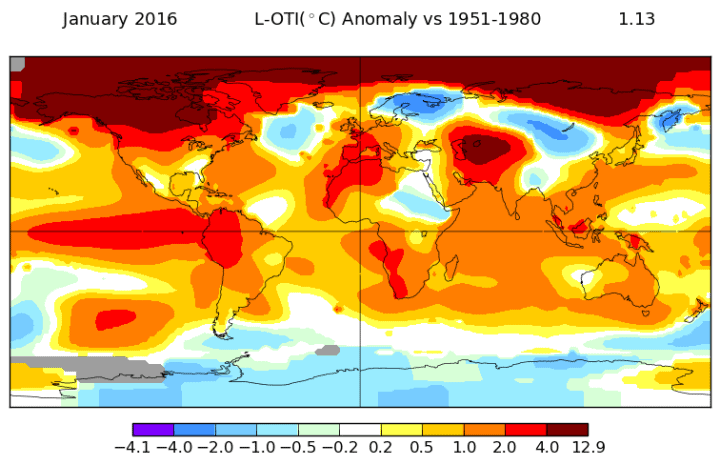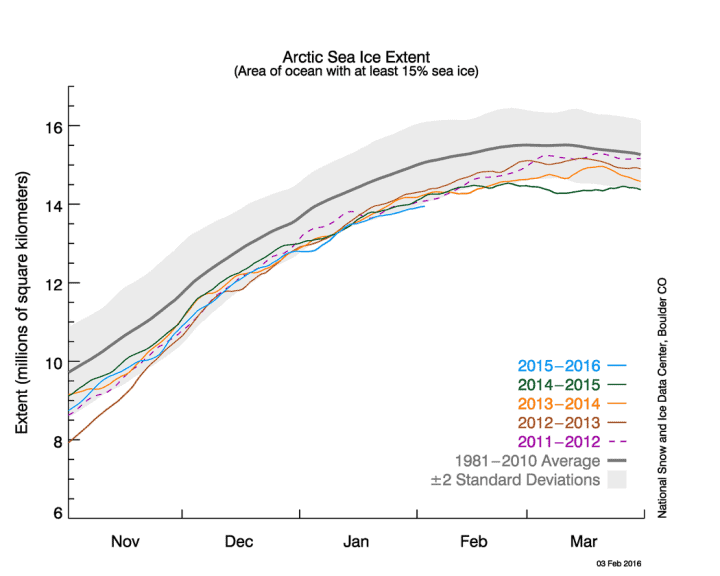The saddening story of global warming continues in 2016 like it did in 2015. According to NASA, this January was the warmest January on record, in more than 150 years.

Credit: NASA GISS
July 2015 was the hottest July on record. September 2015 was the hottest September on record and guess what? The same can be said about November, and the entire year. 2015 was the warmest year on record for sure, and quite likely the hottest year in human history. Unfortunately, the same trends are carrying on in the new year.
The month was 1.13°C — or just a smidge more than 2°F — above normal. That tops December’s record of being 1.11°C — or just a smidge below 2°F — above average, reports Climate Central.
The thing is, global warming is not uniform – it’s not the entire globe that heats up with 1-2 degrees, some areas warm up much more than others. Most notably, the Arctic is warming up. According to NASA, temperatures in some parts of the Arctic averaged up to 23°F above normal for the month. Twenty-three degrees! This is one of the worst places of the world to gain heat, because it means more ice will melt, more CO2 and methane will be released. Furthermore, this will lower the albedo of the area (fraction of solar energy reflected by the Earth), because snow is whiter than the ocean. Since 1979, winter sea ice extent has decreased 3.2 percent per decade and February shows no signs of slowing down.

Source: NSIDC
While the bulk of this heat is comes from man-made emissions, it is true that El Nino can also take some of the blame. The climate phenomenon of warm water in the eastern tropical Pacific might have passed its peak, but it is still contributing to rising temperatures. However, if 2016 continues in the same way, it can very well be the hottest year on record, surpassing even 2015 – having back-to-back hottest years has never happened in human history.


